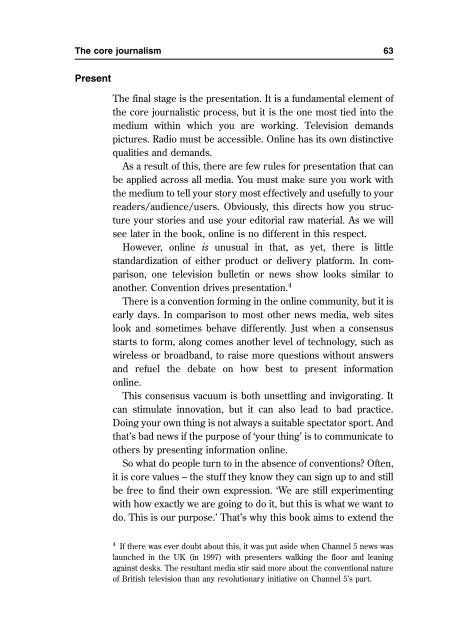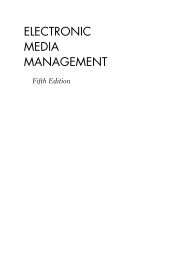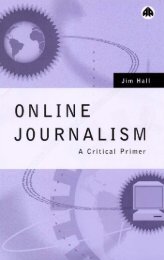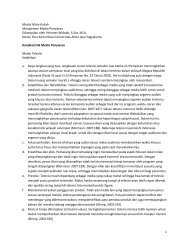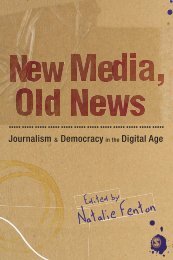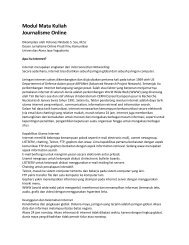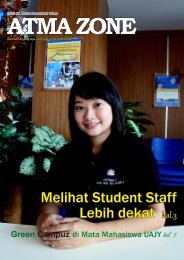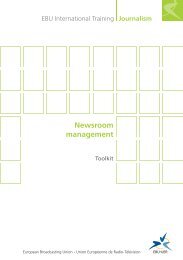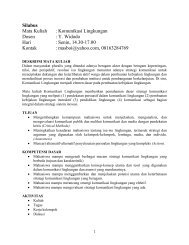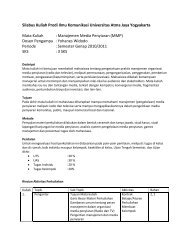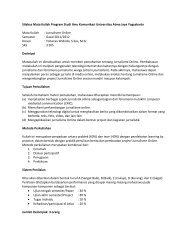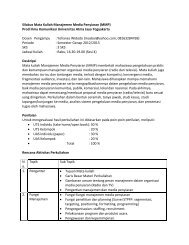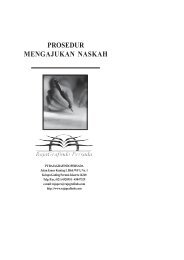1What is online journalism? - Ayo Menulis FISIP UAJY
1What is online journalism? - Ayo Menulis FISIP UAJY
1What is online journalism? - Ayo Menulis FISIP UAJY
Create successful ePaper yourself
Turn your PDF publications into a flip-book with our unique Google optimized e-Paper software.
The core journal<strong>is</strong>m 63<br />
Present<br />
The final stage <strong>is</strong> the presentation. It <strong>is</strong> a fundamental element of<br />
the core journal<strong>is</strong>tic process, but it <strong>is</strong> the one most tied into the<br />
medium within which you are working. Telev<strong>is</strong>ion demands<br />
pictures. Radio must be accessible. Online has its own d<strong>is</strong>tinctive<br />
qualities and demands.<br />
As a result of th<strong>is</strong>, there are few rules for presentation that can<br />
be applied across all media. You must make sure you work with<br />
the medium to tell your story most effectively and usefully to your<br />
readers/audience/users. Obviously, th<strong>is</strong> directs how you structure<br />
your stories and use your editorial raw material. As we will<br />
see later in the book, <strong>online</strong> <strong>is</strong> no different in th<strong>is</strong> respect.<br />
However, <strong>online</strong> <strong>is</strong> unusual in that, as yet, there <strong>is</strong> little<br />
standardization of either product or delivery platform. In compar<strong>is</strong>on,<br />
one telev<strong>is</strong>ion bulletin or news show looks similar to<br />
another. Convention drives presentation. 4<br />
There <strong>is</strong> a convention forming in the <strong>online</strong> community, but it <strong>is</strong><br />
early days. In compar<strong>is</strong>on to most other news media, web sites<br />
look and sometimes behave differently. Just when a consensus<br />
starts to form, along comes another level of technology, such as<br />
wireless or broadband, to ra<strong>is</strong>e more questions without answers<br />
and refuel the debate on how best to present information<br />
<strong>online</strong>.<br />
Th<strong>is</strong> consensus vacuum <strong>is</strong> both unsettling and invigorating. It<br />
can stimulate innovation, but it can also lead to bad practice.<br />
Doing your own thing <strong>is</strong> not always a suitable spectator sport. And<br />
that’s bad news if the purpose of ‘your thing’ <strong>is</strong> to communicate to<br />
others by presenting information <strong>online</strong>.<br />
So what do people turn to in the absence of conventions? Often,<br />
it <strong>is</strong> core values – the stuff they know they can sign up to and still<br />
be free to find their own expression. ‘We are still experimenting<br />
with how exactly we are going to do it, but th<strong>is</strong> <strong>is</strong> what we want to<br />
do. Th<strong>is</strong> <strong>is</strong> our purpose.’ That’s why th<strong>is</strong> book aims to extend the<br />
4 If there was ever doubt about th<strong>is</strong>, it was put aside when Channel 5 news was<br />
launched in the UK (in 1997) with presenters walking the floor and leaning<br />
against desks. The resultant media stir said more about the conventional nature<br />
of Brit<strong>is</strong>h telev<strong>is</strong>ion than any revolutionary initiative on Channel 5’s part.


